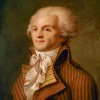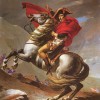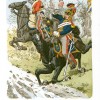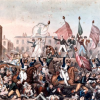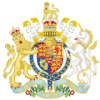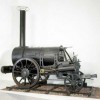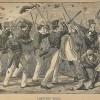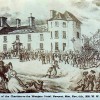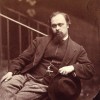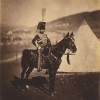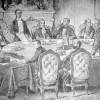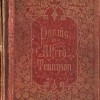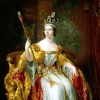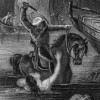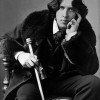This timeline roughly lays out major events after the Restoration until the 1960s. There are some events that are not shown here so we will discover and discuss them together along with the major works we read in class.
Timeline
Table of Events
| Date | Event | Created by |
|---|---|---|
| 1660 | Charles II Restored to the English ThroneThe return of Charles Stuart (son of the beheaded King Charles I) marks the beginning of the Restoration age. |
Ruixue Zhang |
| 1662 | Act of UniformityThe Act requires all clergy to obey the Church of England. |
Ruixue Zhang |
| 1662 to 1664 | Great Plague of LondonGreat Plague of London ravaged London from 1664 to 1666. City records indicate that some 68,596 people died during the epidemic, though the actual number of deaths is suspected to have exceeded 100,000 out of a total population estimated at 460,000. The outbreak was caused by Yersinia pestis, the bacterium associated with other plague outbreaks before and since the Great Plague of London. The Great Plague was not an isolated event—40,000 Londoners had died of the plague in 1625—but it was the last and worst of the epidemics. It began in London’s suburb of St. Giles-in-the-Fields, and the greatest devastation remained in the city’s outskirts, at Stepney, Shoreditch, Clerkenwell, Cripplegate, and Westminster, quarters where the poor were densely crowded. An outbreak was suspected in the winter of 1664, but it did not spread intensely until the spring of 1665. King Charles II and his court fled from London in the early summer and did not return until the following February; Parliament kept a short session at Oxford. In December 1665 the mortality rate fell suddenly and continued down through the winter and into early 1666, with relatively few deaths recorded that year. From London the disease spread widely over the country, but from 1667 on there was no epidemic of plague in any part of England, though sporadic cases appeared in bills of mortality up to 1679. The disappearance of plague from London has been attributed to the Great Fire of London in September 1666, but it also subsided in other cities without such cause. The decline has also been ascribed to quarantine, but effective quarantine was actually not established until 1720. Scholars generally agree that the cessation of plague in England was spontaneous. |
Ruixue Zhang |
| 1673 | The Test ActThe Test act required all holders of civil and military offices to take the sacrament in an Anglican church and to deny belief in transsubstantiation. Protestant Dissenters and Roman Catholics were larged excluded from public life. Samuel Butler's Hudibras (1663) illustrates the religious exclusion and zealot. (Norton Anthology of English Literature: The Restoration and the Eighteenth Century pp 4) |
Ruixue Zhang |
| 1681 | Charles II dissolved ParliamentCharles II dissolved the Parliament after conflicts in religious and political issues, especially after the House of Commons tried to force him to exclude his Catholic brother, James from succession to the throne. This crisis also led to the division of the country between two new political parties: the Tories, who supported the king, and the Whigs, who opposed the king. |
Ruixue Zhang |
| 1685 | James II took the throneJames II, Charles II's brother, a Catholic, took the throne when Charles died. James claimed the rights to make his own laws, suspended the Test Act, and began to fill the goverment and army with Catholics. |
Ruixue Zhang |
| 1688 to 1689 | The Glorious RevolutionThe Glorious Revolution happened when King James II was dethroned and his daughter Mary II and her husband William III, ascended. When King James II came into power, his overt Roman Catholicism alienated the majority of the population. The revolution was motivated both politically and religiously and was thus very complex. In the end it gave parliament more control over the monarchy which eventually led to the formation of a more political democracy. To get into more detail, King James II was Catholic and issued a Declaration of Indulgence suspending penal laws against Catholics (the laws that punish its offenders) and granted acceptance of some Protestant nonconformists. He then formally dissolved his Parliament and attempted to create a new Parliament that would support him unconditionally in his catholic ways of governing and beliefs. Feeling that Catholic dynasty was imminent, the Wigs, who were the main group that opposed catholic succession, were especially outraged.
The fear of King James succeeding in this only grew when in 1688, King James II had a son, James Francis Edward Stuart, that pushed his older Protestant daughter Mary out of the spot as his heir. It became especially worrisome to nonconformists, which were the majority of the country, when King James II announced that his new son and heir would be raised catholic.
With these new announcements and the growing terror of the public, seven of James’s peers wrote to the Dutch leader William of Orange, saying that they would pledge their allegiance to him if he agreed to invade England. William was already planning to take military action against England, so these letters only encouraged him more.
King James had prepared for military attacks though and left London in order to bring his forces to meet the invading army that were backed by William of Orange. However, several of James’s men, including his family members, deserted him, and instead sided with William’s cause.
James then attempted to flee after returning to London in fear of his safety but was captured. He again tried to leave and successfully made it to France where his Catholic cousin Louis XIV held the throne. King James died there in Exile in 1701.
It was then that the new Convention Parliament met and after significant pressure from William, agreed to a joint monarchy with William as king and James’s daughter, Mary, as Queen. The joint monarchy agreed to more restrictions from parliament, and signed what would become a Bill of Rights, as well as the right for regular Parliaments, free elections, and freedom of speech in Parliament. They also forbade the monarchy form being Catholic. Historians believe that this Bill of Rights was the first step towards a constitutional monarchy. This is the point in history that has ultimately led to Parliament’s increasing power in Britain while the monarchy’s influenced has waned. |
Blyss Bolger |
| 1702 | Succession of Queen AnneAnne was born in the reign of Charles II. On Charles's instructions, Anne and her elder sister Mary were raised as Anglicans. After Mary's death in 1694, William reigned alone until his own death in 1702, when Anne succeeded him. |
Ruixue Zhang |
| 1707 | Act of Union with ScotlandScotland becomes part of Great Britain |
Stacey Kikendall |
| 1710 | The Statute of AnneThe Statute of Anne, also known as the Copyright Act 1710, was the first statute to provide for copyright regulated by the government and courts, rather than by private parties. It was formally put as "An Act for the Encouragement of Learning, by Vesting the Copies of Printed Books in the Authors or Purchasers of Copies, during the Times therein mentioned." Prior to the statute's enactment in 1710, copying restrictions were authorized by the Licensing of the Press Act 1662. These restrictions were enforced by the Stationers' Company, a guild of printers given the exclusive power to print—and the responsibility to censor—literary works. The censorship administered under the Licensing Act led to public protest; as the act had to be renewed at two-year intervals, authors and others sought to prevent its reauthorisation. In 1694, Parliament refused to renew the Licensing Act, ending the Stationers' monopoly and press restrictions. The Statute of Anne prescribed a copyright term of 14 years, with a provision for renewal for a similar term, during which only the author and the printers to whom they chose to license their works could publish the author's creations. Following this, the work's copyright would expire, with the material falling into the public domain. Despite a period of instability known as the Battle of the Booksellers when the initial copyright terms under the Statute began to expire, the Statute of Anne remained in force until the Copyright Act 1842 replaced it. |
Ruixue Zhang |
| 1714 | George I became the kingGeorge I (great-grandson of James I) became the king after Queen Anne's death. The Tory government was replaced by Whigs. During George's reign, the powers of the monarchy diminished and Britain began a transition to the modern system of cabinet goverment led by a prime minister. |
Ruixue Zhang |
| 1721 | Robert Walpole became the Prime MinisterThe Whig representative Robert Walpole was the first prime minister of Britain, who installed dependents in government offices and controlled the House of Commons by financially rewarding its members. |
Ruixue Zhang |
| 1727 | George I dies, George II becomes kingGeorge II was George I's son. |
Stacey Kikendall |
| 1737 | Licensing ActThe Licensing Act is a defunct Act of Parliament. Its purpose was to control and censor what was being said about the British government through theatre. The Lord Chamberlain was the official censor and the office of Examiner of Plays was created under the Act. The Examiner assisted the Lord Chamberlain in the task of censoring all plays from 1737 to 1968. The Examiner read all plays which were to be publicly performed, produced a synopsis and recommended them for licence, consulting the Lord Chamberlain in cases of doubt. |
Ruixue Zhang |
| 1746 | Jacobite Rebellion endsCharles Edward Stuart ("Bonnie Prince Charlie)'s defeat at Culloden ends the last Jacobite rebellion |
Stacey Kikendall |
| 1756 to 1763 | Seven Years' WarThe Seven Years' War was a global conflict that involved most of the European Great Powers, and was fought primarily in Europe, the Americas, and Asia-Pacific. Other concurrent conflicts include the French and Indian War (1754–1763), the Carnatic Wars and the Anglo-Spanish War (1762–1763). The opposing alliances were led by Great Britain and France respectively, both seeking to establish global pre-eminence at the expense of the other. Along with Spain, France fought Britain both in Europe and overseas with land-based armies and naval forces, while Britain's ally Prussia sought territorial expansion in Europe and consolidation of its power. Long-standing colonial rivalries pitting Britain against France and Spain in North America and the West Indies were fought on a grand scale with consequential results. Prussia sought greater influence in the German states, while Austria wanted to regain Silesia, captured by Prussia in the previous war, and to contain Prussian influence. |
Ruixue Zhang |
| 1768 | Captain James Cook's voyages to Australia and New ZealandJames Cook made three voyages between 1768 and 1779 in the Pacific Ocean and to New Zealand and Australia in particular. The first one was in 1768. He made detailed maps of Newfoundland prior to making three voyages to the Pacific, during which he achieved the first recorded European contact with the eastern coastline of Australia and the Hawaiian Islands, and the first recorded circumnavigation of New Zealand. |
Ruixue Zhang |
| 1775 to 1783 | American RevolutionAmerican colonies rebel against British rule |
Stacey Kikendall |
| 1783 | The Peace of ParisThe Peace of Paris of 1783 was the set of treaties that ended the American Revolutionary War. On 3 September 1783, representatives of King George III of Great Britain signed a treaty in Paris with representatives of the United States of America—commonly known as the Treaty of Paris (1783)—and two treaties at Versailles with representatives of King Louis XVI of France and King Charles III of Spain—commonly known as the Treaties of Versailles (1783). The previous day, a preliminary treaty had been signed with representatives of the States General of the Dutch Republic, but the final treaty which ended the Fourth Anglo-Dutch War was not signed until 20 May 1784. The treaty dictated that the British would lose their Thirteen Colonies and marked the end of the First British Empire. The United States gained more than it expected, thanks to the award of western territory. The other Allies had mixed to poor results. France got its revenge over Britain after its defeat in the Seven Years' War, but its material gains were minor (Tobago, Senegal and small territories in India) and its financial losses huge. It was already in financial trouble and its borrowing to pay for the war used up all its credit and created the financial disasters that marked the 1780s. Historians link those disasters to the coming of the French Revolution.[2] The Dutch did not gain anything of significant value at the end of the war. The Spanish had a mixed result; they regained Menorca and Florida, but Gibraltar remained in British hands. |
Ruixue Zhang |
| 1789 | Society for the Abolition of the Slave Trade FoundedThe Society for Effecting the Abolition of the Slave Trade, also known as the Society for the Abolition of the Slave Trade, and sometimes referred to as the Abolition Society or Anti-Slavery Society, was a British abolitionist group formed on 22 May 1787. The society was established by twelve men; including prominent campaigners Thomas Clarkson and Granville Sharp, who, as Anglicans, were able to be more influential in Parliament than the more numerous Quaker founding members. The society worked to educate the public about the abuses of the slave trade, and achieved abolition of the international slave trade when the British Parliament passed the Slave Trade Act 1807, at which time the society ceased its activities. |
Ruixue Zhang |
| 5 May 1789 to 10 Nov 1799 | French Revolution
On 5 May 1789, the Estates-General, representing the nobility, the clergy, and the common people, held a meeting at the request of the King to address France’s financial difficulties. At this meeting, the Third Estate (the commoners) protested the merely symbolic double representation that they had been granted by the King. This protest resulted in a fracture among the three estates and precipitated the French Revolution. On 17 June, members of the Third Estate designated themselves the National Assembly and claimed to represent the people of the nation, thus preparing the way for the foundation of the republic. Several pivotal events followed in quick succession: the storming of the Bastille (14 July), the approval of the Declaration of the Rights of Man and of the Citizen (26 August), and the march on Versailles that led to the enforced relocation of the royal family to Paris (5-6 October). These revolutionary acts fired the imagination of many regarding the political future of France, and, indeed, all of Europe. The republican period of the revolution continued in various phases until 9-10 November 1799 when Napoleon Bonaparte supplanted the government. ArticlesDiane Piccitto, "On 1793 and the Aftermath of the French Revolution" |
David Rettenmaier |
| 5 Sep 1793 to 27 Jul 1794 | Reign of Terror
On 5 September 1793, the National Convention, France’s ruling body from 1793 to 1795, officially put into effect terror measures in order to subdue opposition to and punish insufficient support for the revolution and the new regime. From the autumn of 1793 until the summer of 1794, thousands of people across the country were imprisoned and executed (including the Queen) under the ruthless leadership of Maximilien Robespierre. The guillotine, particularly the one in Paris’s Place de la Révolution, served as the bloody emblem of the fear tactics that began to manifest themselves first in the formation of the Committee of Public Safety (6 April 1793) and subsequently in the implementation of the Law of Suspects (17 September 1793). The Terror ended on 27 July 1794 with the overthrow of Robespierre, who was guillotined the next day. ArticlesDiane Piccitto, "On 1793 and the Aftermath of the French Revolution" |
David Rettenmaier |
| 1795 | Gagging ActsThe Gagging Acts refer to two acts of Parliament passed in 1817 by Conservative Prime Minister Lord Liverpool. They were also known as the Grenville and Pitt Bills. The specific acts themselves were the Treason Act 1817 and the Seditious Meetings Act 1817. These acts were passed within a series of bills by the government in order to curb and suppress reformist demands by campaigners and corresponding societies, culminating in the Six Acts of 1819, after the Peterloo Massacre. |
Ruixue Zhang |
| 23 May 1798 to Aug 1798 | Rebellion In IrelandA rebellion led by the Society of United Irishmen started and ended in 1798. It lasted a short 3 months and was fought by many poorly armed soldiers in a poorly organized fashion. Regardless, the death toll numbered within the tens of thousands. The main goal of this rebellion was to proclaim the country independent from Britain and create the Irish Republic. MP was published 16 years after the uprising was put down. Feelings of revolution and unrest were common feelings within the world Austen was writing in at the time. In chapter 2 of MP, Maria and Julia fault Fanny for not knowing geography, particularly relating to Ireland. They tell their mother, "Do you know, we asked her last night which way she would go to get to Ireland; and she said, she should cross to the Isle of Wight. She thinks of nothing but the Isle of Wight, and she calls it the Island, as if there were no other island in the world." Dorney, John. "The 1798 Rebellion – a brief overview." The Irish Story, 28 |
Jessie Taylor |
| 9 Nov 1799 to 18 Jun 1815 | Napoleonic Wars
Historians do not agree on the exact beginning or end of the wars. November 9, 1799 is an early candidate since that is when Napoleon seized power in France. Hoping to ease the difficulty, historians date by isolated wars. They disarticulate the Napoleonic Wars in a linear series:
The successive numerical coordinates for the Coalitions offer regularity, but that regularity is undercut by the shifting make-up of that Coalition (sometimes Prussia was in, sometimes not; sometimes Russia, sometimes not) and by the discontinuity and ambiguity of the dates. Articles |
David Rettenmaier |
| 1801 | 1801 Ireland joins Great BritainParliamentary Union of Ireland and Great Britain. Act of Union passed in 1800, took effect in 1801 |
Stacey Kikendall |
| 1802 | Treaty of AmiensThis Treaty was what stopped the Neopolenic war between France and Britian. During this time France regained most of their colonies. After this treaty took place the size of the militia in Britian shrank tremendously. Change in the malitia may have cheanged hwo the women an military men interacted and may have took some of the stresses of war off of Jane and her brothers.
“French and British Armed Forces.” Encyclopædia Britannica, Encyclopædia Britannica, Inc., https://www.britannica.com/event/Napoleonic-Wars/French-and-British-arm…. |
Jolie Falcon |
| 18 Jun 1815 | Battle of Waterloo
Related ArticlesSean Grass, “On the Death of the Duke of Wellington, 14 September 1852″ Mary Favret, "The Napoleonic Wars" Frederick Burwick, “18 June 1815: The Battle of Waterloo and the Literary Response” |
David Rettenmaier |
| 16 Aug 1819 | Peterloo massacre
Related ArticlesJames Chandler, “On Peterloo, 16 August 1819″ Sean Grass, “On the Death of the Duke of Wellington, 14 September 1852″ |
David Rettenmaier |
| 1 Apr 1829 | Roman Catholic Relief Act
The Catholic Relief Act of 1829 allowed Catholics to become Members of Parliament and to hold public offices, but it also raised the property qualifications that allowed individuals in Ireland to vote. The passage of the Catholic Relief Act marked a shift in English political power from the House of Lords to the House of Commons. The Act was led by the Duke of Wellington and passed despite initially serious opposition from both the House of Lords and King George IV. ArticlesRelated ArticlesCarolyn Vellenga Berman, “On the Reform Act of 1832″ Sean Grass, “On the Death of the Duke of Wellington, 14 September 1852″ |
David Rettenmaier |
| 15 Sep 1830 | Opening of Liverpool & Manchester Railway
Articles
|
David Rettenmaier |
| 30 Oct 1831 | Riots at BristolOn 30 October 30 1831, a crowd of 10,000 took possession of Queen Square in Bristol, as rioting in nine cities and towns marked the failure of the second version of the First Reform Bill in the House of Lords. Related Articles |
David Rettenmaier |
| 29 Aug 1833 | Factory Act
ArticlesRelated Articles |
David Rettenmaier |
| 29 Aug 1833 | Slavery Abolition Act
Articles |
David Rettenmaier |
| 1837 to 1840 | ChartismChartism was a British working class reform movement that emerged amid the economic depression between 1837-1838. The name comes from the People’s Charter, a bill drafted by a radical in London named Willian Lovett in 1838. The People’s Charter had six demands, universal manhood suffrage, equal electoral districts, vote by ballot, annually elected parliaments, payments of members of Parliaments, and abolition of property qualifications for membership. William Lovett was a secretary and one of the original founders of an organization called the London Working Men’s association, an organization created in 1836 that primarily appealed to skilled laborers and championed for general education. The organization also aligned itself with Owenite Socialism, a form of utopian socialism named after British social reformer Robert Owen. The core philosophy in which Owen’s essays, “ A New View of Society; or, Essays on the Principle of the Formation of the Human Character,” is based on is the belief that human character is formed by circumstances over which individuals have no control.” The Chartist movement wasn't very successful, in 1839 A Chartist convention had met in London in February to prepare a petition to present to Parliament. “Ulterior measures” were threatened should Parliament ignore the petition, but the delegates disagreed on how much militant action should be used and the convention failed. Later that year in May the movement had moved to Birmingham where riots had led to the arrest of the movement's leaders William Lovett and John Collins. In the following month the convention returned to London and presented its petition in July which Parliament had rejected. This was followed in November by an armed uprising of Chartists at Newport, which was quickly suppressed. Its principal leaders were banished to Australia, and nearly every other Chartist leader was arrested and sentenced to prison. The Chartists then started to organize under more moderate tactics. Three years later a second national petition was presented achieving more than three million signatures, but again Parliament refused to consider it. The movement began to lose momentum in the 1840s as the economy had started to return. Source: https://www.britannica.com/biography/Robert-Owen#ref5434 |
Larry Blicharz |
| The first Opium War went from 1839-1842. The second went from 1856-1860. | The Opium WarsOpium Wars 1-1839-1842-Britain vs China 2-1856-1860-Britain and France vs China Britain went to war with China twice in the Victorian Era. These wars are called the Opium wars because opium was at the heart of both conflicts. Beginning in the 1700s, Britain imported many Chinese products, including silk, porcelain, and tea. The problem, from the British point of view, was that the Chinese didn’t seem to want anything the British had to offer (including cotton) and demanded silver for their products. This did not make the East India Trading Company—the major player in British trade at the time—very happy. Someone, somewhere, came up with the idea to grow opium and sell it to the Chinese. “…by the 1820s, the balance of trade was reversed in Britain’s favour, and it was the Chinese who now had to pay with silver” (Hayes). The Chinese didn’t like this at all. They “…recognized that opium was becoming a serious social problem and, in the year 1800, it banned both the production and the importation of opium. In 1813, it went a step further by outlawing the smoking of opium and imposing a punishment of beating offenders 100 times.” Unfortunately, it wasn’t enough and by 1838, 40,000 opium chests were being smuggled into China each year. China had enough and stopped foreign trade. In response to the stoppage of trade and because of an attitude that “…that China was out of touch with “civilized” nations,” Britain fought back and in 1839 the first Opium War began. In the end, Britain won both wars and forced China to open their doors to trade and forced the legalization of opium use. There are two reasons I find these wars interesting. The first is that in all the books we read this semester, silk is associated with the upper-class. That means that the obsession/expectation that the landed gentry and aristocracy had in wearing these fabrics contributed to the Opium Wars. The second fascinating thing about the Opium Wars is that China ceded Hong Kong to Britain in the Treaty of Nanjing. This is the beginning of the political/social problem we see in the news today as Hong Kong reverts to China. The ramifications of these wars, that ended over 160 years ago, are continuing today. https://asiapacificcurriculum.ca/learning-module/opium-wars-china |
Dianne Freestone |
| 14 Jun 1839 | First Chartist Petition
ArticlesChris R. Vanden Bossche, "On Chartism" Related ArticlesJo Briggs, “1848 and 1851: A Reconsideration of the Historical Narrative” |
David Rettenmaier |
| Nov 1839 | Newport Uprising
ArticlesChris R. Vanden Bossche, "On Chartism" Related ArticlesJo Briggs, “1848 and 1851: A Reconsideration of the Historical Narrative” |
David Rettenmaier |
| 17 Jul 1841 | Punch launchedOn July 17 1841, Punch, a mass-circulation periodical, was launched. Articles |
David Rettenmaier |
| 1842 | Treaty of Nanking (Nanjing)Under this treaty, the first of a series of so-called "unequal treaties" and the one which ended the First Opium War, Hong Kong was ceded in perpetuity to Britain. The Chinese were forced to allow Western trade, formerly restricted only to Canton (Gaunghzhou) at five "treaty ports": Canton, Shanghai, Amoy (Xiamen), Ningpo (Ningbo), and Foochowfoo (Fuzhou). |
Ross Forman |
| 2 May 1842 | Second Chartist Petition
ArticlesChris R. Vanden Bossche, "On Chartism" Related ArticlesJo Briggs, “1848 and 1851: A Reconsideration of the Historical Narrative” |
David Rettenmaier |
| 14 May 1842 | The Illustrated London News launched
Articles |
David Rettenmaier |
| 8 Aug 1842 | Manchester strike
ArticlesChris R. Vanden Bossche, "On Chartism" Related ArticlesJo Briggs, “1848 and 1851: A Reconsideration of the Historical Narrative” |
David Rettenmaier |
| 1845 to 1852 | The Great FamineThe Great Famine, also known as the Great Hunger and the Potato Famine, was a disaster caused by a fungus known as potato blight. Diseased crops, plus laws put in place to allow exporting crops from Ireland, led to about 1 million deaths, primarily in the rural areas of Ireland. Because of England's inaction, the Irish would grow to resent the English and tensions between both countries would grow. During the famine, many Irish people would immigrate to America in hope of a better life. The following article provides a detailed look into the causes, experiences, and aftermath of the Great Famine. In particular this article goes into detail on the Irish who would settle in America, and the trials that faced them. |
Lydia Gottshall |
| circa. 1846 | 1846 Repeal of the Corn Laws
COVE Timeline Assignment: 1846 Repeal of Corn Laws The British Corn Laws, or laws that regulated imported grains and food, were influenced by both economic and political conditions in Britain. The purpose of the tariffs were to keep people from buying forgien corn products and, in turn, force people to buy domestic corn products. This was meant to stimulate Britain's economy by enforcing domestic industry practices; it was also enacted to heavily favor the rich landholders who were invested in farmland production. The Corn Laws would not allow foreign corn into Britain unless domestic corn reached a price of 80 shillings per quarter (Vamplew 3). These laws offered a “significant degree of protection to British cereal producers” (Vamplew 11) who made huge profits from grain production. Landowners, seizing the majority of monetary profit, also retained much of the political power at the time; the act of voting was reserved for those who owned land. Thus, the beneficiaries of the Corn Laws were not the common people who were forced to buy grain at an absurdly high price, but the few lucky enough reap the benefits.
While Britain's common people suffered from poverty, starvation and unsanitary living conditions, they were upset by the increasing price of grain products. Many had to quit their jobs because they were ill or they needed to take care of family members; those who did earn a wage used most of it to buy grain products to survive. The middle class was desperate for reform-- not wanting to suffer like those impacted by Irish in the Irish Potato Famine-- and wanted representation in their government. Cheryl Schonhardt-Bailey, author of From the Corn Laws to Free Trade: Interests, Ideas, and Institutions in Historical Perspective, writes “In sum, repeal was an attempt to moderate the mounting pressures for parliamentary reform: by satisfying the middle class industrialist with repeal, the drive to gain control of parliamentary seats would cease, and, moreover, the working class Chartist movement (seeking more radical reform of Parliament) would lose momentum” (16). The repeal of the Corn Laws was a motion intended to “settle down” the middle class by lowering the cost of grain products and thus progressing to a free market economy.
In addition to political reform, the repeal of the Corn Laws may have been the aftermath of a growing population; Betty Kemp, author of “Reflections on the Repeal of the Corn Laws” writes, “The simplest argument for the repeal of the Corn Laws is that the rapid growth of population' in the nineteenth century, which made it necessary to import increasing quantities of wheat, also made it un- justifiable to tax those imports” (3). Thus, a booming need for more materials lead to the repeal of the Corn Laws. This repeal, led by Sir Robert Peel, was a victory for the middle class (Kemp 2) and “the final triumph of the Free Trade move- ment” (Thomas 2) which sought to lower prices on grain and provided the economy with various trade options. Supplemental Material
Works Cited Kemp, Betty. "Reflections on the Repeal of the Corn Laws." Victorian Studies 5.3 (1962): 189-204. Schonhardt-Bailey, Cheryl. From the corn laws to free trade: interests, ideas, and institutions in historical perspective. Mit Press, 2006. Thomas, J. A. "The Repeal of the Corn Laws, 1846." Economica 25 (1929): 53-60. Vamplew, Wray. "The protection of English cereal producers: the Corn Laws reassessed." The Economic History Review 33.3 (1980): 382-395. |
Rebecca Cybulski |
| Sep 1848 | Pre-Raphaelite Brotherhood founded
Related ArticlesElizabeth Helsinger, “Lyric Poetry and the Event of Poems, 1870″ Morna O’Neill, “On Walter Crane and the Aims of Decorative Art” Linda M. Shires, "On Color Theory, 1835: George Field’s Chromatography" |
David Rettenmaier |
| 1 May 1851 to 15 Oct 1851 | Great Exhibition
The Great Exhibition of 1851 was an event in the history of: exhibitions; world’s fairs; consumerism; imperialism; architecture; collections; things; glass and material culture in general; visual culture; attention and inattention; distraction. Its ostensible purposes, as stated by the organizing commission and various promoters, most notably Prince Albert, were chiefly to celebrate the industry and ingeniousness of various world cultures, primarily the British, and to inform and educate the public about the achievement, workmanship, science and industry that produced the numerous and multifarious objects and technologies on display. Designed by Joseph Paxton, the Crystal Palace (pictured above) was a structure of iron and glass conceptually derived from greenhouses and railway stations, but also resembling the shopping arcades of Paris and London. The Great Exhibition of the Works of Industry of All Nations became a model for World’s Fairs, by which invited nations showcased the best in manufacturing, design, and art, well into the twentieth century. ArticlesAudrey Jaffe, "On the Great Exhibition" Related ArticlesAviva Briefel, "On the 1886 Colonial and Indian Exhibition" Anne Helmreich, “On the Opening of the Crystal Palace at Sydenham, 1854″ Anne Clendinning, “On The British Empire Exhibition, 1924-25″ Barbara Leckie, “Prince Albert’s Exhibition Model Dwellings” Carol Senf, “‘The Fiddler of the Reels’: Hardy’s Reflection on the Past” |
David Rettenmaier |
| 2 Oct 1853 to 30 Mar 1856 | Crimean War
ArticlesStefanie Markovits, "On the Crimean War and the Charge of the Light Brigade" |
David Rettenmaier |
| 30 Mar 1856 | Treaty of ParisOn 30 March 1856, signing of the Treaty of Paris, ending the Crimean War. Image: Treaty of Paris, the participants (Contemporary woodcut, published in Magazin Istoric, 1856). This image is in the public domain in the United States because its copyright has expired. ArticlesStefanie Markovits, "On the Crimean War and the Charge of the Light Brigade" |
David Rettenmaier |
| 1857 | The Matrimonial Causes Act of 1857 Makes Divorce Legal in EnglandChapters 26 and 27 of Jane Eyre cover Jane and Mr. Rochester’s failed attempt to get married as well as the backstory for Mr. Rochester’s hidden marriage with Bertha Mason, the woman he kept locked in the attic since returning to England from Jamaica. Though he had successfully kept the identity and relation to the woman a secret for fifteen years, Mr. Rochester admits this truth upon being prevented from marrying Jane, and he invites everyone to visit “Mrs. Poole’s patient, and [his] wife” who he was “cheated into espousing” (262). In trying to provide explanation and reassurance to Jane, Mr. Rochester reveals that doctors “had discovered that [his] wife was mad” and that he had entered the marriage under false pretenses regarding her age, her well-being, and the affect she would have on his life (275). Though there are larger implications for Mr. Rochester’s decision to lock his wife away for years, taking a closer look at the matrimonial and divorce laws of that time period and region may provide some helpful context for the absence of divorce as a solution in the novel. Having been published in 1847, Jane Eyre was constructed in a time that divorce was not an easily available option in England. According to the UK Parliament, “the only way of obtaining a full divorce which allowed re-marriage was by a Private Act of Parliament” before the mid-nineteenth century, and there were only 314 divorces from 1700 to 1857, mostly initiated by husbands (“Obtaining a divorce”). However, divorces were only granted for adultery, and they were mostly limited to the very wealthy due to its costly process (“Obtaining a divorce”). Since Bertha was unwell rather than engaged in an adulterous affair, Mr. Rochester could not legally and publicly end his marriage. It was not until 1857, ten years after the publication of Charlotte Brontë's Jane Eyre, that the Matrimonial Causes Act would pass and allow married couples to divorce through a special court while essentially keeping the grounds for divorce the same: men could divorce their wives for adultery “but a woman could only obtain a divorce if her husband was physically cruel, incestuous or bestial in addition to being adulterous” (Wood). However, Gail Savage notes that divorce remained an unlikely option for a large population since the court was located only in London, and while "expense barred most of the working class from the court,” the societal expectations and “the social stigma must have discouraged many of those who could have borne the cost” (103, 108). Had the Matrimonial Act of 1857 been passed sooner and had her circumstances been different, Bertha Mason could have potentially tried to end her marriage with Mr. Rochester for his adultery and physical cruelty if she wanted. The likelihood of this being obtainable, however, would still largely depend on her ability to prove it all, her wealth, and likely her well-being as well. Instead, she faced being married to a man that took ownership of her wealth and locked her away during a time where no laws had been made to fairly apply to both husbands and wives and where divorce was virtually impossible, especially when initiated by a woman. Works Cited Brontë, Charlotte. Jane Eyre, edited by Deborah Lutz, 4th ed. Norton, 2016. “Obtaining a Divorce.” UK Parliament, https://www.parliament.uk/about/living-heritage/transformingsociety/private-lives/relationships/overview/divorce/. Accessed 21 January 2022. Savage, Gail L. “The Operation of the 1857 Divorce Act, 1860-1910 a Research Note.” Journal of Social History, vol. 16, no. 4, Oxford University Press, 1983, pp. 103–10, http://www.jstor.org/stable/3786994. Wood, Margaret. “Marriage and Divorce 19th Century Style.” Library of Congress,https://blos.loc.gov/law/2018/02/marriage-and-divorce-19th-century-style/. Accessed 21 January 2022. Image Citation Houses of Parliament, London, England. [Between 1890 and 1900] Photograph. Retrieved from the Library of Congress, www.loc.gov/item/92518894/. |
Selena Mendoza |
| May 1857 | "Moxon Tennyson" published
Articles |
David Rettenmaier |
| 2 May 1857 | Opening of Reading Room of the British Library
Related Articles |
David Rettenmaier |
| 10 May 1857 to 20 Jun 1858 | Indian Uprising
ArticlesPriti Joshi, “1857; or, Can the Indian ‘Mutiny’ Be Fixed?” Related ArticlesJulie Codell, “On the Delhi Coronation Durbars, 1877, 1903, 1911″ |
David Rettenmaier |
| 25 May 1857 to 25 Jun 1857 | Pre-Raphaelite Art Exhibit
Related Articles |
David Rettenmaier |
| 22 Jun 1857 | Victoria and Albert Museum opened
Related ArticlesCarol Senf, “‘The Fiddler of the Reels’: Hardy’s Reflection on the Past” |
David Rettenmaier |
| 15 Jul 1857 | Massacre of British at Cawnpore, India
Related Articles |
David Rettenmaier |
| 1860 | Expansion of Hong Kong to KowloonIn 1860, China ceded Kowloon Peninsula to Britain as part of the Convention of Peking ending the Secomd Opium War. |
Ross Forman |
| circa. 1864 to circa. 1869 | Contagious Diseases Acts of 1864 and 1866The Contagious Disease Act was initially enacted in 1864 with the goal of preventing sexual diseases within the armed forces. This Act allowed for any woman who was suspected of being a prostitute to be arrested and later was forced to endure medical checks for sexually transmitted diseases. If a woman was to be found with a disease, they were detained in hospitals for a certain period of time. The Act was later reformed in 1866 as government officials worked to spread the jurisdiction of the Act to more sites of military personnel as well as the civilian population. Both Acts were to be carried out and executed through the use of police force with the addition of purpose-built lock wards in which the women were confined to in the reformed Act of 1866 (McHugh 16). To begin with, the Contagious Disease Act was defended as a means of sanitary measures and to set proper moral views. The House of Commons Committee states in Acton’s book, “Although the Act has only been in operation for two years and a half, and at some stations only seven months, strong testimony is borne to the benefits, both in a moral and sanitary point of view, which have already resulted from it” (Acton 3). With a little over two years in action, the House of Commons Committee claimed they were making beneficial strides towards a more sanitary and moral environment with the implementation of the Acts. Overall, prostitution had seemed to fully diminish and society seemed to morally be doing better. In addition, Acton states “Only those utterly ignorant of what has been achieved, will be so bold as to deny the excellent effects produced by the Contagious Disease Act in the protected districts” (Acton 11). Once again, Acton claims that there have been beneficial effects in response to the Acts, and anybody who denies it is wrong. Acton’s idea is that whatever is good for the few is good for the many, regardless of how the Acts treat women as inferior to men. When the Acts first came about, government officials did not worry themselves too much of defending the purpose of these Acts, as there was no significant challenge to their legitimacy (Walkowitz 71). It wasn’t until the late 1860s where public opposition became prominent enough to where government officials had to begin to justify themselves. The start of the repeal movement recruited many extraordinary campaigners who found the Acts to be repugnant such as moralists, feminists, individualists, and other opponents of medical pretensions and military arrogance (McHugh 16). One campaigner who made unprecedented strides towards the repeal of the Contagious Disease Acts and is considered to be the leader goes by the name of Josephine Butler. Mrs. Butler saw prostitution as a social problem rather than a sexual problem and demanded equality of treatment with men (McHugh 21). Mrs. Butler was not alone, as those who wanted to repeal the Act made the same argument. It was unfair to treat the disease as if it is something only a woman could cause and there cannot be an Act that singles out one gender and punish them. The Acts were essentially made for the protection of males in which was assured through the inspection of females (McHugh 17). Once again, government officials mentioned the moral and social benefits of the Act and made post hoc fallacies arguing that since women are the gender with the disease, they must be the one causing it, which was entirely irrelevant to the initial argument in 1864. At the end of the day, these acts were intended to be the first stage in the creation of a moral and sanitary utopia. The Contagious Diseases Acts were consistent with a set of attitudes and "habits of mind" toward women, sexuality, and class that permeated the official Victorian culture. Works Cited: Acton, William. Contagious Diseases Act, Shall the Contagious Diseases Act be Applied to the Civil Population? London, John Churchill & Sons, 1870. McHugh, Paul. Prostitution and Victorian Social Reform. New York, Routledge, 1980. Walkowitz, Judith R. Prostitution and Victorian Society: Women, Class, and the State. Cambridge, Cambridge University Press, 1980. |
Jake Bolger |
| 1867 | The Second Reform BillThe Second Reform Bill built on the Reform Bill of 1832 in that it continued the progressive push for democratization of the existing British government. The Reform Bill of 1867 expanded "voting privileges from the upper levels of property holders to less wealthy and broader segments of the population" (Reform Bill, 994). The Victorian age is noteworthy for being a period of great social transition (as demonstrated in the aforementioned Reform Bills) in which people outside of aristocracy began to have a say in the government. This was brought on by a burgeoning, literate, and fiscally dependent middle class. This new middle class of people used their newfound knowledge to critique, and subsequently, to improve their living conditions. For example, Charles Dickens' Oliver Twist asked readers to consider the living conditions of the urban poor (a story featured in a magazine that was read and produced by members of the middle class). Source: "Reform Bill.” Encyclopædia Britannica, Encyclopædia Britannica, 1994, pg. 994. Trailll, Henry Duff. Social England - A Record of the Progress of the People in Religion, Laws, Learning, Arts, Industry, Commerce, Science, Literature and Manners, From the Earliest Times to the Present Day. 1901. University of California Libraries. |
Dylan Magruder |
| 16 Oct 1869 | Opening of Girton College at CambridgeIn 1869 the college of Girton at the University of Cambridge was founded by Emily Davies. Girton was the first women's college at Cambridge. Originally, Girton College was located at Hitchin, then shortly after opening moved to Girton where the campus remains today. Just two years later, in 1871, Henry Sidgwick opened a second college and residence for women in Cambridge which relocated to Newnham Hall and became known as Newnham College in 1875. In more recent times, the University of Cambridge opened two more women's colleges. New Hall opened in 1954 and Lucy Cavendish College opened in 1986. Although Girton paved the way for women at Cambridge, Girton began admitting men into the school in 1977, while Newnham, New Hall and Lucy Cavendish all remain strictly women's colleges. In an article titled "English and American Colleges for Women," published in 1877, the writer talks about how even though Girton was a school at the University of Cambridge the students from Girton did not receive a University degree. In another article titled "Women at the University of Cambridge," it states that women did not receive degrees or full status until 1947. Women's acceptance into college was a step forward in the suffrage movement, giving women the right to attend classes, become more independent and have more job opportunities. When women finally received full status and degree, it became and an even bigger step forward, giving women and men a more equal education. I received all of my information from articles "Women at the University of Cambridge," and "English and American Colleges for Women." All of the mapsites are women's colleges that I learned about in these articles along with Cambridge itself.
Elaine D. Trehub. "Women at the University of Cambridge." The Victorian Web, November 27, 2016, www.thevictorianweb.org/history/education/trehub/3.html "English and American Colleges for Women." New York Times (1857- 1922), Feburary 18, 1877 pp. 6. ProQuest, https://search-proquest-com.ezaccess.libraries.psu.edu/docview/93591529…
|
Devin Poplin |
| 9 Aug 1870 | 1870 Married Women's Property Act
This Act established limited protections for some separate property for married women, including the right to retain up to £200 of any earning or inheritance. Before this all of a woman's property owned before her marriage, as well as all acquired after the marriage, automatically became her husband's alone. Only women whose families negotiated different terms in a marriage contract were able to retain control of some portion of their property. ArticlesRachel Ablow, "On the Married Woman's Property Act, 1870" Related ArticlesKelly Hager, “Chipping Away at Coverture: The Matrimonial Causes Act of 1857″ Jill Rappoport, “Wives and Sons: Coverture, Primogeniture, and Married Women’s Property” Anne Wallace, “On the Deceased Wife’s Sister Controversy, 1835-1907″ |
David Rettenmaier |
| 1 Jan 1877 | First Delhi Coronation Durbar
ArticlesJulie Codell, “On the Delhi Coronation Durbars, 1877, 1903, 1911″ |
David Rettenmaier |
| 1885 to 1914 | Scramble for AfricaThe Scramble for Africa was the large push by European countries to colonize Africa between the 1880s and the first World War. A large cause for this mass colonization was the availability of market resources. The European countries that participated in this event were France, Great Britain, Belgium, Spain, Italy, Germany, and Portugal. The rivalries between these European countries was also fuel for this endeavor. The resources and land available in Africa would provide them with different advantages against the rivals. The United States also took part; however, they only colonized Liberia under the leadership of the American Colonization Society that sought to use the land for free slaves to immigrate to. This event and the competition that arose was a major factor that led to the breakout of World War I. As India was a colony of Britain, its economy was likely affected by the scramble. Therefore, Haimabati Sen’s life was likely indirectly affected by this, especially with its contribution to the beginning of the First World War in which India was allied with the UK. Source: “Scramble for Africa.” Scramble for Africa - New World Encyclopedia. https://www.newworldencyclopedia.org/entry/Scramble_for_Africa#The_clas…. |
DeShawn Thompson |
| 14 Aug 1885 | Criminal Law Amendment Act
Related ArticlesMary Jean Corbett, “On Crawford v. Crawford and Dilke, 1886″ Andrew Elfenbein, “On the Trials of Oscar Wilde: Myths and Realities” |
David Rettenmaier |
| Apr 1895 to May 1895 | Trials of Oscar Wilde
ArticlesAndrew Elfenbein, “On the Trials of Oscar Wilde: Myths and Realities” |
David Rettenmaier |
| 14 Oct 1897 | Founding of the National Union of Women's Suffrage SocietiesOn October 16, 1896, approximately twenty leaders of women’s suffrage organizations in Britain gathered together at the Birmingham Conference to discuss the possibility of merging their individual societies into one joint organization. Because each society was fighting for the same overall goal-- women’s suffrage-- they decided that uniting their organizations would be a beneficial and powerful strategy (Hume 4, Vellacott 1). Thus, one year later, on October 14, 1897, the National Union of Women’s Suffrage Societies, commonly acronymized as NUWSS, was founded. At its founding, the NUWSS had seventeen member societies, including many of the largest and most influential women’s suffrage organizations in Britain at the time (Hume 4). The seventeen member societies branded themselves-- and the NUWSS as a whole-- as a non-militant, constitutional, and non-party-affiliated organization united to achieve women’s suffrage (Holton 1, Hume 5, Vellacott 1). In the early years, the role of the NUWSS was limited. Because each member society still functioned independently in its designated location and the NUWSS had no funds to support its members, the organization had little control over how the individual societies functioned. Instead of managing its members, the main duty of the NUWSS was to communicate with the Committee of Parliamentary Supporters of Women’s Suffrage (Hume 6, Vellacott 2). Direct communication with Members of Parliament was the first step in getting the government to hear and consider the idea of women’s suffrage (Hume 6). Spearheading the NUWSS after its founding was Millicent Garrett Fawcett who served as the president of the organization from 1898-1919 (Holton 1, Hume 7-8). Fawcett had experience with women’s rights, as she grew up with a father who was a strong believer in feminism and a sister who helped to pave the way for women in the medical field (Holton 1). Fawcett and many other members of NUWSS were described as women whose personalities closely resembled that of a typical Victorian woman. They were kind wives and mothers and gentle, loving figures all around (Hume 13). While this helped create a sense of camaraderie among the societies in the NUWSS, it was not helpful in their quest to have their issues heard or considered by the government. In general, 1897-1903 were building years for the NUWSS and were not as successful as perhaps the organization had hoped. The NUWSS tried to advocate for their cause, but they were often too gentle and did not fight to break the sex barriers to have their voices heard by Members of Parliament (Hume 9-11). After years of not having a single concern of theirs talked about in the House of Commons, the Committee of Parliamentary Supporters of Women’s Suffrage suggested that the individual member societies of the NUWSS directly approach Members of Parliament who lived in their area to communicate to them the importance of women’s suffrage (14). If Members of Parliament could be convinced women’s suffrage was an important cause, perhaps the entire Parliament would listen to the issue. In 1903, after the Boer War was over and a General Election was approaching, the NUWSS had a change in strategy. In late 1903, two-hundred women from the NUWSS and other women’s rights societies met for a convention in London (Holton 1, Hume 20-21). What is argued to be the most important aspect of the 1903 convention was the idea that going forward, the NUWSS would establish new committees in every county in Britain and Ireland (Hume 21). These new committees would commit themselves to consistently speaking with Members of Parliament and electoral candidates about the women’s suffrage issue as well as informing the general public about the importance of women’s suffrage and encouraging them to only support candidates who supported the cause (Hume 21, Vellacott 2). These actions helped to establish the NUWSS as a united, governing body rather than a collection of individual societies (Hume 21-22). After the 1906 election where the Liberal party secured its place in office, the NUWSS was hopeful that its campaigning efforts would lead the House of Commons to discuss women’s suffrage, but they were, once again, overly optimistic (Hume 23). After having no success in having their concerns heard, in July 1906, the NUWSS started a movement to speak to individuals in Parliament who were against women’s suffrage to try to convince them to rethink their position. Then, in October of the same year, the NUWSS announced it would sponsor a candidate who supported women’s suffrage (26). While all of these efforts were steps in the right direction in the overall goal of achieving women’s suffrage, the NUWSS was still a fairly new and growing society. In the following years, the organization had its share of ups and downs. It organized public events to further campaign for this cause, and it was eventually renamed the National Union of Societies for Equal Citizenship (Holton 4). The fight for equal voting rights for women continued into 1928 when it was finally achieved thanks, in part, to the work of the National Union of Women’s Suffrage Societies. Works Cited Holton, Sandra Stanley. “National Union of Women's Suffrage Societies (Act. 1896–1918).” Oxford Dictionary of National Biography, 24 May 2008, doi:10.1093/ref:odnb/96378. Hume, Leslie Parker. The National Union of Women's Suffrage Societies 1897-1914. Vol. 3, Routledge, 2016. Vellacott, Jo. Pacifists, Patriots and the Vote: The Erosion of Democratic Suffragism in Britain During the First World War. Palgrave Macmillan, 2014. |
Gracie Hart |
| Autumn 1899 to 1902 | 1899-1902 Anglo-Boer WarIn October of 1899 a war broke out in South Africa. The war would become known as the Anglo-Boer war. Oddly enough the war would frequently be called “The White Man’s War,” because the natives in the region had nothing to do with the conflict. The parties involved were Great Britain and its colonized regions (Canada, Australia, and New Zealand) and two former British republics; the Free Orange State and Transvaal. The people in this region were called the Boer people and primarily consisted of Danish farmers who settled in the area in the 17th century. The Boers were very independent and essentially cut themselves off from mainland Europe. By 1850 the Boers subdivided into the Free Orange State and Transvaal. Relations between the Boer states and other British colonies were not good before the war began but the primary conflict that led to war in 1899 was over the control of the Transvaal gold fields in the Boer region. As more gold was found, an increasing number of ‘Uitlanders’ (foreigners) moved to the region. British representatives wished that the foreigners, primarily Europeans, would have the immediate right to vote in Transvaal elections. The British Empire saw this as a way to win back the separating territory and a good amount of gold. The Transvaal representative disagreed and war broke out in the area as British soldiers would not leave the area as requested by the Transvaals. The Anglo-Boer war is commonly known as Britain's Vietnam due to the Empire’s underestimation of the Boer peoples fighting ability. The British thought that the war would only last for a week, yet in fact the war lasted for over two years and thousands of people lost their lives, just like in the Vietnam war. Unfortunately the African natives, who had little to no involvement in the war, suffered thousands of casualties as they were forced into concentration camps by the British. The Anglo-Boer war was a tragic war, not only did the Boers lose their independence from the British, they also lost thousands of women and children from the camps. The war destroyed Boer towns and farms, but most catastrophic was the destruction of the Boer way of life. Works Cited: Canadian War Museum, Jerome Foldes-Busque. “Canada and the South African War, 1899-1902.” WarMuseum.ca - South African War - Boer War Maps, Canadian War Museum, www.warmuseum.ca/cwm/exhibitions/boer/boerwarmaps_e.html. “Case Name: Anglo-Boer: Britain's Vietnam .” Class\Work\Boerwar, American University of Washington D.C Trade Environment Projects, 27 Oct. 2016, web.archive.org/web/20161027014601/www1.american.edu/ted/ice/boerwar.htm. |
William Smith |
| 1901 | First Wireless communication across the AtlanticAt the turn of the 20th century, Guglielmo Marconimi, an Italian inventor and electric engineer, began investigating a means to signal across the Atlantic to compete with the transatlantic telegraph cables. Marconi established a wireless transmitting station at Marconi House, Rosslare Strand, County Wexford, in 1901 to act as a link between Poldhu in Cornwall, England, and Clifden in Connemara, County Galway, Ireland. He soon made the announcement that the message was received at Signal Hill in St. John's, Newfoundland (now part of Canada), on 12 December 1901, using a 500-foot (150 m) kite-supported antenna for reception—signals transmitted by the company's new high-power station at Poldhu, Cornwall. The distance between the two points was about 2,200 miles (3,500 km). |
Ruixue Zhang |
| The end of the month Winter 1901 | Death of Queen VictoriaPublished in 1890-1891, The Picture of Dorian Gray takes place at the end of the nineteenth century in Victorian era Britain. About 10 years after the events of The Picture of Dorian Gray, on January 22, 1901 Queen Victoria passed away at the age of 81. Ironically enough, the previous year, 1900, had been Queen Victoria’s “annus horribilis” she wrote “a horrible year, nothing but sadness and horrors of one kind or another.” It kind of just adds to the irony that her worst year ends as well as her life. On January 22, 1901, "Superintendent Fraser ordered the household police to surround the queen's Isle of Wight residence Osborne House. All telephone and telegraph wires were to be suspended, and any servant or messenger to be prevented from leaving. A short while later he walked down the long gravel drive to the entrance gate where a large crowd was waiting, and pinned a small notice on to the bulletin board.“Osborne House, January 22, 6.45pm: Her Majesty the Queen breathed her last at 6.30pm, surrounded by her children and grand-children.”The death of Queen Victoria marked the end of the Victorian Era of Britain. Queen Victoria was succeeded by her son, Edward VII, who was also succeeded by George V in 1910, just 9 years later. “History of the British Isles.” Wikipedia, Wikimedia Foundation, 20 Oct. 2020, en.wikipedia.org/wiki/History_of_the_British_Isles. “The Final Days and Death of Queen Victoria.” HistoryExtra, 31 Jan. 2020, www.historyextra.com/period/victorian/queen-victoria-death-funeral-mask…. “The Picture of Dorian Gray.” Wikipedia, Wikimedia Foundation, 18 Oct. 2020, en.wikipedia.org/wiki/The_Picture_of_Dorian_Gray. |
Ben Hestad |
| 28 Jun 1914 | The Assassination of Archduke Franz Ferdinand
On the twenty-eighth of June, 1914, a young man toppled the fragile structure of world order with two bullets—one for Archduke Franz Ferdinand of Austria-Hungary, the other for the Archduke’s wife, Sophie. The royal couple were invited to the Bosnian capital of Saravejo, which was annexed by the Austrian empire in 1908, by General Oskar Potoirek to attend a speech in the city hall and inspect imperial military personnel. The shooting occurred just hours after a botched bombing attempt, about which the Archduke is recorded to have said to the military governor, “What is the good of your speeches? I come to Sarajevo on a visit, and I get bombs thrown in my face. It is outrageous” (The Times). After the failed bombing, the speech and the inspection of Sarajevo’s military parade, riding in the back of a roofless motor-car—as was common for the time—through the streets of Sarajevo among a crowd of thousands gathered to see the royal couple, they were shot dead (The Times). After the two shots were fired, the young gunman swallowed a cyanide pill but somehow survived (Jay 19). He was promptly pointed out by the crowd and arrested by Bosnian officials. That young gunman was nineteen-year-old Gavrilo Princip, misidentified by The Times in London as Nadjeliko Cabrinovitch just a day after it happened. Gavrilo Princip was one of three men involved in the assassination plot directly, and a member of the Black Hand, a group of Serbian nationalist extremists (Jay 19). He was too young to be executed by Austria-Hungarian law, so he was instead sentenced to life in prison in Theresienstadt, where he wasted away in solitary confinement (Jay 19). The Black Hand’s actions, carried out by Gavrilo Princip’s hand, is often considered to be the straw that broke the camels back with regards to stoking the flame of the first world war (Schmitt 70). This event is important to highlight when exploring historical examples of “toxic patriotism”, as Gavrilo Princip’s nationalistic mindset is ultimately what led to his involvement with the Black Hand and eventually to his shooting of the Archduke. Moreover, although Princip ultimately died for his actions, he was hailed as a martyr by many who viewed the annexation of Sarajevo and Bosnia as a bad thing, thus further stoking a ravenous nationalistic mindest which spiraled into WW1 (Jay 20). Similarly, this sentiment was mirrored in the attitudes of many of the nations which then involved themselves in the war—this idea of the romanticisation or the idealization of one’s homeland. To Princip, his homeland was under siege by a foreign power, infected and otherwise beautiful, and that is a state of mind which mirrors many contemporary examples of toxic patriotism—namely the January 6th insurrection at the United States capitol building. In both this event and the insurrection of the U.S. capital building, the party responsible for the violence believed they were engaging in a fight to rid their homeland from an occupying force which tainted its natural goodness. Primary Source: "Austrian Heir and his Wife Murdered." The Times, 29 June 1914, p. 8. Gale Primary Sources, https://go-gale-com. Other Works Cited: Jay, Martin. "The Manacles of Gavrilo Princip." Salmagundi, no. 106/107, 1995, pp. 14-21. JSTOR, https://www.jstor.org/stable/40548800. Schmitt, Bernadotte E. "The Origins of the War of 1914." The Journal of Modern History, vol. 24, no. 1, March 1952. JSTOR, https://www.jstor.org/stable/1871982.
|
Samuel Pickett |
| The end of the month Spring 1916 | The Easter Rising in DublinThe Easter Rising in Dublin occurred on Easter Monday: April 24, 1916. The Easter Rising was an insurrection against the British government that wished for independence from Britain, and causally, to cut ties from obligations to serve Britain. By the end of the day important civic and private property, including the city’s post office, was seized by the rebel army of the Irish Republic. The Irish Republic consisted of three main factions: “the revolutionary fraternity of the Irish Republican Brotherhood, the Irish volunteers who opposed Ireland’s participation in Britain's imperial war, and the Irish Citizens Army (992). One of the leaders of the insurrection, Patrick Pearse, came down the post office steps after it had been seized in the early afternoon and proclaimed Ireland to be an independent republic. The Irish Citizens army was a worker’s militia formed in retaliation to the police brutality that had occured against striking unions three years prior on the infamous Bloody Sunday. Within the week the insurrection was suppressed and resulted in the death and injury of thousands. The leaders of the revolt were then executed—swaying public opinion towards the side of the rebellion as the leaders and their causes became martyred. Although the rebellion was initially unsuccessful in securing independence for Ireland, it’s resulting shift in public opinion against Britain marshal law and their rushed executions of suspected allies to the rebellion led to parliament members being elected who wished to establish a free republic. Eventually, a treaty was signed amongst Britain and Ireland that created the Irish Free State. Works Cited Arrington, Lauren. “Socialist Republican Discourse and the 1916 Easter Rising: The Occupation of Jacob's Biscuit Factory and the South Dublin Union Explained.” Journal of British Studies, vol. 53, no. 4, 2014, pp. 992–1010. JSTOR, www.jstor.org/stable/24701520. Accessed 6 Dec. 2020. History.com Editors. “Easter Rising.” History.com, A&E Television Networks, 9 Nov. 2009, www.history.com/topics/british-history/easter-rising.
|
Madison Rheinheimer |
| 1917 to 1922 | The Russian Civil WarFrom the wake of World War I, Russia was divided. Lenin and the Bolsheviks seized power in the October Revolution. It is important to add that Lenin believed the only way to bring change was through violent uprising and not peaceful change. Once in power, Lenin had pulled Russia out of the war so the nation could focus on rebuilding, specifically by using Marxism to help build the communist state. This revolution and Lenin’s rise to power threw Russia into conflict quickly. Many different people rose up to push back against these Bolshevik ideals. There were two main groups that were opposing Lenin: the non-Bolshevik left, who had been finally alienated from Lenin by his dissolution of the Constituent Assembly and the rightist Whites, whose main asset was the Volunteer Army in the Kuban steppes. This “White Army” as they called themselves was the biggest opposition to Lenin. It was composed of many different groups but all to go against the Bolshevik Red Army. Multiple battles erupted all throughout Russia. While many of the smaller armies/movements struggled, The White Army held strong and was holding their own against the Bolsheviks. In late 1918, the Bolsheviks only really held power in the western industrial cities because of Allied Germany, treaties, and the White Army’s advances. Then in November 1918, World War I officially came to an end and the line of Eastern Europe were redrawn. Other countries pulled their troops out and the Bolsheviks saw their chance to push. The Bolsheviks sought dominance over the East and West. Their push east was not too successful, but into the east they spread quickly. With this push the Bolsheviks took dominance fast. This is largely due to the fact that the Bolsheviks had a singular, united goal and a strong leader behind it, while the White Army was more disjointed with many goals throughout the leaders. In 1919, the White Army was making progress towards Moscow but the Bolsheviks then made an alliance with the Black Army in Ukraine and stopped their advancement and pushed them back. By 1920, the White Army was all but destroyed in the East. The Whites could no longer effectively fight the Black and Red Army. Late 1920 saw Poland and Ukraine form an alliance and launch an offensive against the Bolsheviks in hopes to reunite the Ukrainian State. While they captured Kyiv they were met by a numerically superior Red Army. The Red Army then kept advancing farther into Poland but were halted and the Bolsheviks made a treaty with Poland. This guaranteed Polish independence but left Ukraine under Bolshevik control. With this, the remnants of the White Army fled. Even in this, Lenin saw more opportunity for power and control. With the White Army fleeing, this allowed Lenin to break his alliance with the Black Army and turn on them. They would eventually surrender in 1921. The Bolsheviks would then take over Georgia and Romania to finish off the White Army. The Bolsheviks annexation of the Far Eastern Republic in 1922 effectively ended the war and created the Soviet Union. The revolution and war displayed the ruthless power-grabbing mindset under Lenin and the Bolsheviks that has led to so much of what modern Russia has become. Lenin’s ideals and effect on history still have weight and repercussions in the present. Russia and Ukraine are still dealing with the trickle-down effect of this complex history. The grasping for power at the expense of others is still something that weighs on these countries as we can see in Ukraine today.
Works Cited Britannica, The Editors of Encyclopaedia. "Russian Civil War". Encyclopedia Britannica, 19 Nov. 2020, https://www.britannica.com/event/Russian-Civil-War. Accessed 26 April 2022.
Raleigh, Donald. “The Russian Civil War, 1917–1922.” The Cambridge History of Russia, edited by Ronald Grigor Suny, vol. 3, Cambridge University Press, Cambridge, 2006, pp. 140–167. The Cambridge History of Russia.
Reiman, Michael. “About the Russian Revolution of 1917.” About Russia, Its Revolutions, Its Development and Its Present, Peter Lang AG, 2016, pp. 13–24, http://www.jstor.org/stable/j.ctv2t4dn7.4. Accessed 26 Apr. 2022 |
Truitt Anweiler |
| 18 Jan 1919 to 28 Jun 1919 | Treaty of Versailles 1919The Treaty of Versailles was responsible for officiating the end of World War I which lasted from 1914 to 1918. The negotiations for this treaty started at the Peace Conference of Paris in January 1919. The end of the war saw the collapse of empires such as the Ottoman Empire, the Russian Empire, Austrian Empire and German Empire. This called for a new international order that was unlike anything in modern history. The Treaty of Versailles was the first treaty to be certified at the Peace Conference as it “tried to regulate the new international order that had emerged in Europe as a result of the outcome of World War I” (Keleher et al.). The four core delegates that put together this treaty were from France, Britain, United States and Italy. Their main and unanimous goal was figuring out the best way to stop Germany from causing any more harm. On June 28, 1919 the Treaty of Versailles was officially signed and the only great power not to sign it was the United States. What might be best known about this treaty is the harsh financial implications that it had for Germany. “The treaty’s provisions placed an extreme financial burden on Germany, thereby laying the foundation for another world conflict within a generation” (Keleher et al.). But there were also more implications for Germany such as a substantial loss of territory and disarmament.
Germans taking apart German war machines as part of the disarmament terms. (Photo by Hulton Archive/Getty Images) President Woodrow Wilson was hoping that the inclusion of the League of Nations in the treaty would be enough to keep the peace. However, the Treaty of Versailles created a lot of bitterness and desire for something more in the German people. It left the door open for someone like Adolf Hitler to gain control. Almost inevitably, the next world war started in 1939 just twenty years after the signing. Video of the Peace Conference of Paris Works Cited Keleher, Edward P., and Lewis L. Gould. “Treaty of Versailles.” Salem Press Encyclopedia, 2019. EBSCOhost, search.ebscohost.com/login.aspx?direct=true&AuthType=ip&db=ers&AN=89316411&site=eds-live&scope=site. |
Anna Hughes |
| The start of the month Dec 1921 to 1922 | 1921-22 - The Formation of the Irish Free StateDespite having a history of violence and distrust between the Irish Republic and England for years prior, from approximately 1916-1921, the Anglo-Irish war, or the Irish War of Independence, resulted in the formation of the Irish Free State. To conclude the war, the Anglo-Irish treaty was signed which declared the Irish Free State as an independent dominion similar to the then Dominion of Canada and the Commonwealth of Australia within the British Empire. Because of this treaty, the Irish Free State essentially had political independence, but the treaty included the Irish Free State as part of the British Commonwealth and included a heavily debated oath of allegiance that declared, “I….do solemnly swear true faith and allegiance to the Constitution of the Irish Free State as by law established and that I will be faithful to H.M. King George V., his heirs and successors by law, in virtue of the common citizenship of Ireland with Great Britain and her adherence to and membership of the group of nations forming the British Commonwealth of Nations” (Treaty Between Great Britain and Ireland). There was a three-step process for the transfer of power from British rule that included a provisional government, an assembly of constituents to approve a constitution, and the election of the first parliament (Corcoran). Exactly one year after the treaty was signed, December 6th, 1922, the Irish Free State government officially gained political control under the leadership of Prime Minister William T. Cosgrave. The next day, Northern Ireland decided to remain separate from the Irish Free State. As a newly independent state, the first few months and years of the Irish Free State suffered from many internal issues (Corcoran). Conflict broke out into what is considered to be the Irish Civil War between those who approved the Anglo-Irish treaty and those who refused to recognize the state as a free state. Because of this internal fighting, the government of the Irish Free State had a primary focus on Law and Order and therefore passed acts such as the Public Safety Act 1923, the Punishment of Offenders Act 1924, the Firearms Act 1924, and the Treasonable and Seditious Offences Act 1925 (Corcoran). Ultimately, those in favor of the Anglo-Irish treaty won the civil war, and the fighting wasted many resources in a newly independent dominion (Corcoran). Despite the internal political fighting; however, a government was established relatively quickly which is significant as the Irish Free State is still separated from Great Britain and the United Kingdom in the 21st century and remains a heavy political discussion among cultures, citizens, and religion. https://www.youtube.com/watch?v=nF3P7cdgU_I Works Cited Cocoran, Donal. "Public Policy in an emerging state: The Irish Free State 1922-25." Irish Journal of Public Policy, vol. 1, no. 1, Dec. 2009.
Great Britain and Irish Free State. treaties.un.org, https://treaties.un.org/doc/Publication/UNTS/LON/Volume%2026/v26.pdf#pa…. Treaty Between Great Britain and Ireland signed in London on December 6. 1921.
|
Meghan Williamson |
| circa. 1928 | Passing of Women's Legislation by ParliamentIn 1928, women in the United Kingdom were given universal suffrage. From that time up until World War II and beyond, more and more women began breaking the boundaries that were previously laid out for them and they began being a part of the work force and it was becoming more common for women to stray from the Cult of Domesticity. This was especially important during World War II when women had to step up and take the place of many of the jobs that men had previously held but now had to abandon to go to war. After the war, women were more respected but also more ridiculed because men were now intimidated by women because they saw how easily women could replace them in their jobs and how much women were truly capable of. This was an important period in time because although legally women were given equal rights in 1928 by Parliament, socially, there was still inequality between men and women. Women’s work towards the war effort showed men that they were capable and that they were deserving of their rights. Additionally, after World War II when many countries had to be rebuilt both physically and economically, the more help, the better. Therefore, I believe speaking about the newfound independence and freedom of women during this time is important to note when looking at this image. It is assumed that the woman in At Charley Brown's Pub, Limehouse is a sex worker, however, since she is dressed quite modestly, I believe an argument could be made that she was a woman coming off of a shift as well as the men who are assumed to be getting off of work. As you can see, the woman is in pants and a shirt with a long jacket over it. Although it was becoming more popuiar for women to wear pants rather than a skirt or dress, it could still be seen as a risque thing in the 1940s.
Evans, Sophie Jane. Those were the days: From England's pubs to Sheffield's steel industry and preparations for war - film archive reveals how life was in 1930s and 40s Britain. Daily Mail. 28 May. 2014. https://www.dailymail.co.uk/news/article-2641959/British-Council-film-a… Accessed 29 Mar. 2022. Jones, Jasmine. 151 years of progress: A timeline of women's rights and gender equality in the UK. YahooLife. 8 Mar. 2017. https://www.yahoo.com/lifestyle/151-years-of-progress-a-timeline-of-wom… Accessed 29 Mar. 2022.
|
Marianna Balsamo |
| The start of the month Summer 1928 | 1928 - Women Over the Age of 21 Gain Voting RightsIn 1928 women twenty-one or older finally received the right to vote in the UK. This did not come easy to women and took a lot to accomplish. The Representation of the People (Equal Franchise) Act 1928 was an Act of the Parliament of the United Kingdom. “It was not until the Equal Franchise Act of 1928 that women over twenty-one were able to vote and women finally achieved the same voting rights as men. This act increased the number of women eligible to vote to fifteen million.” (Thevote). Some would later complain that the age should be lowered to eighteen, but this would not happen until 1967. The Representation of the People Act of 1918 helped pave the road to the Equal Franchise Act, it allowed women over the age of thirty who met a property qualifications to vote. Yet this left out a significant amount of women allowing only two-thirds of the total population of women in the UK to vote. It would unfortunately take another decade to reach the Equal Franchise Act allowing all women the right to vote with no restrictions except age. Many of the women who had fought for this right were now dead including Elizabeth Garrett Anderson, Barbara Bodichon, Emily Davies, Elizabeth Wolstenholme-Elmy, Constance Lytton and Emmeline Pankhurst. However, the leader of the NUWSS during the campaign Millicent Fawcett, was still alive and attended Parliament to see the vote take place. Winston Churchill, the Chancellor of the Exchequer, was opposed to women’s right to vote and argued that the country should not be put into the hands of a female majority. He was just one struggle women faced along with other hardships like being imprisoned, hunger strikes, and assault. Overall women are lucky to have the rights they do today and must never stop fighting to be just as equal as men. Video about 2 minutes: https://it-it.facebook.com/JeremyCorbynMP/videos/jeremy-corbyn-votes-for-women/10156562425118872/ Video about 3 minutes: https://www.youtube.com/watch?v=1WxDvkO7Pw8 Citations: (john@spartacus-educational.com), J. (n.d.). Retrieved December 08, 2020, from https://spartacus-educational.com/W1928.htm Millicent Fawcett on the passing of the Equal Franchise Act - archive, 6 July 1928. (2018, July 06). Retrieved December 08, 2020, from https://www.theguardian.com/politics/2018/jul/06/millicent-fawcett-equal-franchise-women-vote-1928 Thevote. (n.d.). Retrieved December 08, 2020, from https://www.parliament.uk/about/living-heritage/transformingsociety/electionsvoting/womenvote/overview/thevote/ Women's suffrage timeline. (2017, August 16). Retrieved December 08, 2020, from https://www.bl.uk/votes-for-women/articles/womens-suffrage-timeline |
Miranda Courtemanche |
| 1930 to 1939 | "The Slump" - The Great Depression in the United KingdomFrom 1930 to 1939 and forward, the United Kingdom, as did most of the world, faced economic downfall and affected every class in some way. It began when the stock market on Wall Street in New York crashed. Although this depression began in the United States, it was not long until it took over Europe and the rest of the world. The crash subsequently created a domino effect of events; decreased consumerism, low demand for exports out of Europe, and an incredibly high unemployment rate. This time was extremely challenging and terrifying and no one knew what to do next and how to get out of the global panic that took over most of the world. Unemployment rates had increased by 150% while the number of exports had fallen by 50%. From the time of the Great Depression to when this photo of the pub was taken, the world was being rebuilt both from the Depression and then the effects of the Second World War. It was a time of hard work, but also of hope and finally being able to see a chance at a better future.
Brain, Jessica. The Great Depression. Historic UK. https://www.historic-uk.com/HistoryUK/HistoryofBritain/Great-Depression/ Accessed 29 Mar. 2022. |
Marianna Balsamo |
| 17 Jul 1936 to 1 Apr 1939 | The Spanish Civil WarThe Spanish Civil War took place from 1936-1939, it was between the nationalists and republicans of Spain. A main cause of the war was that the Spanish democracy was failing its people and not fulfilling their needs. Some saw this war as a precursor to World War II, which it very likely was. Nationalists were more conservative and traditional; republicans were socialist. General Francisco Franco became a prevalent nationalistic figure within the war. He deployed nationalist troops to seize cities of Spain. The war had many different layers to it, class differences, religious struggle, dictatorship vs democracy, and fascism vs communism. Again the idea of duality presents itself. There are always multiple perspectives when it comes to understanding the several layers of war. The nationalists ultimately won the war, yet there was still a political division and power struggle within the country. The war took place during the art exposition in Paris. This attracted more attention to controversial art. Picasso did many pieces on war and conflict, and Dora’s portrait can be interpreted as such. It can be seen as a display of anxiety in the Spanish people as well as those around the world. https://www.history.com/this-day-in-history/spanish-civil-war-breaks-out |
Elianna Gouvas |
| Sep 1939 to Sep 1945 | World War Two and the HolocaustIn 1933, the Nazi regime rose to power in Germany, eventually sparking the beginning of World War two September of 1939. This was the most violent and deadly war to have occurred. In total, around 85 million people died including civilians and military deaths. The world was forever changed by this death toll. One of the most horrific causes of deaths during this time were from the Holocaust. 6 million Jews were murdered, along with millions of other “enemies” to the Nazi regime, such as 1.8 polish civilians (not including the Jewish population), 70,000 criminals, 312,000 Serb civilians, and many more. Lucian Freud was one of the lucky few who fled to Britain in 1933 before the carnage began. All of these deaths had severe, lasting impacts on people around the world. Three percent of the total population had vanished in only six years. Those that made it home from war were severely scared and traumatized by what they had seen. Many were disabled. It changed the public’s view on war and on death. In America, war had for so long been something we were proud of participating in and an event that showed our glory and power. But after World War Two, while the Allies had “won”, the resulting deaths and damage partly tore away this notion and reminded everyone how deadly and horrible war really was. It helped everyone value peace times and led to many war protests later on in History. It also amplified the importance of individual life, when such a bulk had been lost to one cause.
|
Kierra Weyandt |
| The start of the month Autumn 1940 to The middle of the month Spring 1941 | The BlitzThe Blitz was an eight month long bombing campaign against the United Kingdom, especially East London, by the Germans during World War II. During this time, the Docklands in the East End of London, where the pub Limehouse is located, contained some of the city's most important hubs for imports and had storafe areas for necessities that were needed to support the war effort. Due to this, it became a huge target for bombing raids. The Germans believed that if they could cut off this major hub, that the United Kingdom would have supply shortages and the overall country would be weaker and easier to overcome. After the first night of the Blitz, there were over 1900 casualties, and by the end of it, over 47,000 houses were destroyed. They even bombed Buckingham Palace in 1940. After this period and after the war, the East End was almost completely destroyed and much of the land was in ruins, meaning that there was a lot of work that went into rebuilding the city. The men in this photo most likely would have been dockworkers who stopped by the pub after work and the woman in the photo could have been a sex worker trying to make money in a time when the world was rebuilding its wealth after the Second World War.
Oakley, Malcolm. World War 2 and East London. East London History. 7 Oct. 2013. https://www.eastlondonhistory.co.uk/world-war-2-east-london/ Accessed 27 Mar 2022.
Britannica, The Editors of Encyclopaedia. the Blitz. Encyclopedia Britannica, 31 Aug. 2021. https://www.britannica.com/event/the-Blitz. Accessed 27 March 2022.
The economic downfall from the stock market crash caused the economy of the United Kingdom to do a tailspin and completely fall apart. With high unemployment rates and low demand for exports out of Europe, many people were scared of how they were going to be able to survive this time in their lives. Towards the end of the Great Depression was when World War II began. This photo by Bill Brandt takes place in the Docklands of London, on the East End. This was a hub for imports and exports for the United Kingdom and due to that, was a huge target for German bombers in the beginning of World War II. This was when the Blitz occurred for a period of about 8 months. The goal of the Germans was to weaken the country by not allowing it to get anything shipped in and for not getting anything sent out. After these bombings, London was nearly unrecognizable, and it took lots of hard work to rebuild the country back up to what it once was prior to the war. The time after World War II, when this photo of Charley Brown’s Pub was taken by Bill Brandt in 1945, was a time of growth, hope, and rebuilding. This was a time that called for all hands on deck. The men in this photo, most likely dockworkers, played a large role in rebuilding the country. They were the ones loading and unloading ships that were being sent in and out. They were the ones who were the backbone of the country who worked to make it a better place. In 1928, women in the United Kingdom were given universal suffrage. From that time up until World War II and beyond, more and more women began to be a part of the work force and become the “New Woman” that had many talents and skills. During World War II, women had to step up and take the place of many of the jobs that men had to abandon to go to war. After the war, women believed that they should keep the jobs and be able to have a place in the work force. This was an important period in time because although legally women were given equal rights in 1928 by Parliament, socially, there was still inequality between men and women. Women’s work towards the war effort showed men that they were capable and that they were deserving of their rights. Additionally, after World War II when many countries had to be rebuilt both physically and economically, the more help, the better. Therefore, I believe speaking about the newfound independence and freedom of women during this time is important to note when looking at this image. The men in this photo most likely would have been dockworkers who stopped by the pub after work and the woman in the photo could have been a sex worker trying to make money in a time when the world was rebuilding its wealth after the Second World War. However, I think that there is an argument that the woman in the photo is in fact not a sex worker and is a woman coming home from work. She may represent the modern woman at this time by wearing pants and a long coat, having short hair, and being in the Docklands of London, right where all of the docks were that were being loaded and unloaded. I believe that all three of these events: The Slump, the Blitz, and women entering the work force all had a great influence on this image.
|
Marianna Balsamo |
| 6 Aug 1945 to 9 Aug 1945 | The Bombing of Hiroshima and NagasakiThe bombing of Hiroshima and Nagasaki by nuclear detonation took place during the last year of World War Two. The names of the two bombs used are “Little Boy” (used on Hiroshima) and “Fat Man (used on Nagasaki). Many believe this to be a controversial moment in the history of the United States of America and the Allied forces near the end of the world war. The two common thoughts are that the bombings were necessary to quickly stop the fighting and further death on both sides and that the bombings were unnecessary and Japan would have surrendered anyways. The two bombs had a combined death toll of at least 200,000 civilian casualties and resulted in many slow and agonizing deaths for many years to come after the events. Considering that Japan was mostly defeated, and that the death toll was so high for civilian casualties through bombing, the idea that the bombs were used to limit the deaths of the war seems like a stretch and sounds like the United States trying to justify a horrible act and terrible order. It furthers this idea that we would rather kill thousands and thousands of other civilians than lose one more American or Ally. We put our lives over the lives of hundreds of thousands of other innocent civilians who did not participate in the war. While this is the case, many were celebrating this display of power and destruction and glorifying it. Take for example this newspaper story posting from The San Francisco Chronicle, titled “Japan Hit By Atom Bomb---Mightiest Weapon in History! Tokyo Admits Heavy Damage” (San Francisco Chronicle 1945). This title shows how we are proud about the nuclear attacks and idolizing their power. While we can conclude how these bombings murdered hundreds of thousands of people, news outlets were ignoring this and feeding the public with headlines like these that celebrate these killings and attacks. This further fires up people to the point that we start to believe we are better than all those other nations and people, who are simply just people living on earth like Americans. This mindset and narrative that these headlines put out contributes to toxic patriotism and is similar to how propaganda and news outlets were used to spread misinformation that led to the January 6, storming of the United States Capital Building riots. According to Gar Alperovitz and Martin Sherwin in an article that discusses how the nuclear attacks were unnecessary, “However, the overwhelming historical evidence from American and Japanese archives indicates that Japan would have surrendered that August, even if atomic bombs had not been used — and documents prove that President Truman and his closest advisors knew it.” We can see how there was evidence that Japan was going to surrender regardless of the attacks or not. Yet, without looking further into it, the United States and the Allies decided to kill hundreds of thousands of people. We can further see the terrible fallout of the attacks in Hayo Kromback’s The Meaning of Hiroshima and Nagasaki, in the quote “Many of us today who also survived face a harder task: that of imagining and internalizing an all-incinerating blast. It is difficult to manage such a mental leap” (Kromback 4). In this quote, we see how the terrors of the bombings went past the enormous death toll but have affected people mentally for years after the event. We see how toxic patriotism led to the horrible aftermaths of the nuclear bombings during World War Two. The mindsets that led to this happening are not much different than the minds that those who stormed the capital. Similar to how we see the Allied Forces justifying the horrible action of annihilating two major Japanese cities full of innocent people, we see how then President Trump causes his supporters to storm the Capitol Building, take it by force, and threatened the lives of many innocent people (law makers, police officers, civillians etc.). This 'false' justification that we see the Allied Forces make is similar in mindset to the justifications Trump made to basically order his people to take the Capitol Building, to try to overturn a lost election.
Related Links: WW2 Propaganda: Influence of Racism. https://editions.covecollective.org/chronologies/ww2-propaganda-influen… Park Street Riot 1944. https://editions.covecollective.org/chronologies/historical-event-1914-… Exodus of Working Women After WW2. https://editions.covecollective.org/chronologies/exodus-working-women-a…
Primary Source: San Francisco Chronicle, Japan Hit By Atom Bomb---Mightiest Weapon in History! Tokyo Admits Heavy Damage. 1945. https://www.pinterest.com/pin/561120434797283790/
Secondary Sources: Alperovitz, Gar., Sherwin, Martin. Dropping Atomic Bombs On Hiroshima And Nagasaki Was Unnecessary. Common Dreams, 2020. Krombach, Hayo. The Meaning of Hiroshima and Nagasaki. Norwegian Institute for Defence Studies, 1997. |
Matthew Armstrong |
| 1947 | India and Pakistan became independent.The Partition of India in 1947 was the change of political borders and the division of other assets that accompanied the dissolution of the British Raj in South Asia and the creation of two independent dominions: India and Pakistan. The Dominion of India is today the Republic of India, and the Dominion of Pakistan—which at the time comprised two regions lying on either side of India—is now the Islamic Republic of Pakistan and the People's Republic of Bangladesh. |
Ruixue Zhang |
| 1948 | Apartheid Laws in South AfricaThe system of racial segregation and oppression in South Africa known as apartheid was implemented and enforced by many acts and other laws. This legislation served to institutionalize racial discrimination and the dominance by white people over people of other races. While the bulk of this legislation was enacted after the election of the National Party government in 1948, it was preceded by discriminatory legislation enacted under earlier British and Afrikaner governments. Apartheid is distinguished from segregation in other countries by the systematic way in which it was formalized in law. |
Ruixue Zhang |
| 1955 | Suez CrisisThe Suez Crisis, or the Second Arab–Israeli war, also called the Tripartite Aggression in the Arab world, and the Sinai War in Israel, was an invasion of Egypt in late 1956 by Israel, followed by the United Kingdom and France. The aims were to regain control of the Suez Canal for the Western powers and to remove Egyptian president Gamal Abdel Nasser, who had just swiftly nationalized the foreign-owned Suez Canal Company, which administered the canal. Israel's primary objective was to re-open the blocked Straits of Tiran. After the fighting had started, political pressure from the United States, the Soviet Union and the United Nations led to a withdrawal by the three invaders. The episode humiliated the United Kingdom and France and strengthened Nasser. |
Ruixue Zhang |


